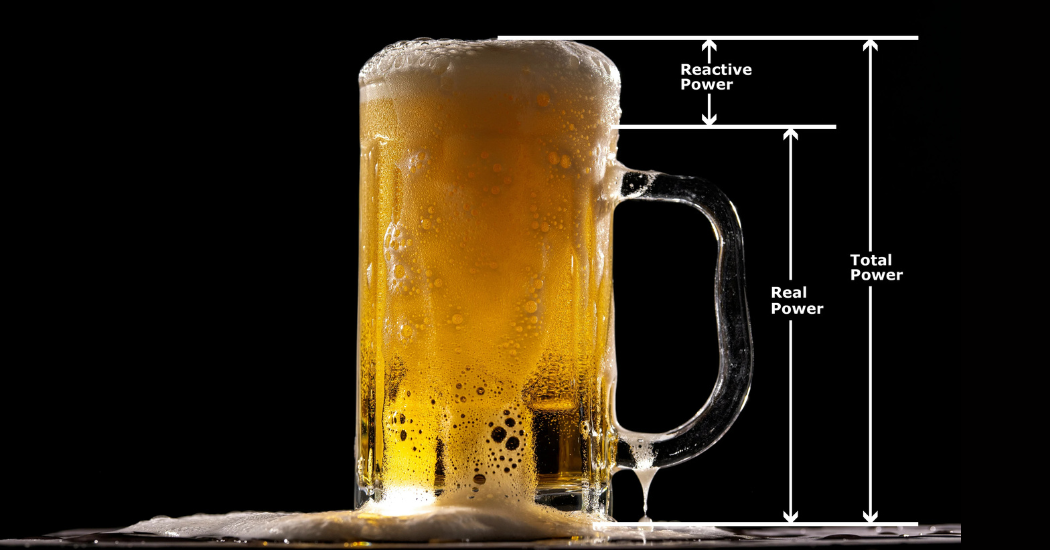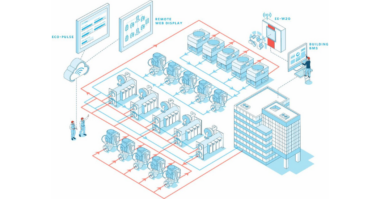Power factor measures how efficiently a system utilizes electrical power. It is defined as the ratio of real power (measured in kilowatts, kW) to apparent power (measured in kilovolt-amperes, kVA). Mathematically, it is expressed as:
 A power factor of 1 (or 100%) is ideal, meaning all the power supplied by the utility is being used effectively. However, power factors are usually lower than 1, due to the presence of inductive loads such as motors, transformers, and fluorescent lighting, which cause a phase difference between voltage and current.
A power factor of 1 (or 100%) is ideal, meaning all the power supplied by the utility is being used effectively. However, power factors are usually lower than 1, due to the presence of inductive loads such as motors, transformers, and fluorescent lighting, which cause a phase difference between voltage and current.
In commercial buildings, a low power factor can lead to several issues:
Increased Electricity Costs: Utilities may charge penalties for low power factor because it indicates inefficient use of electrical power. These penalties are often reflected in higher demand charges on the electricity bill.
Reduced System Capacity: A low power factor means more apparent power is required to perform the same amount of work, reducing the capacity of the electrical distribution system. This can lead to overloading of electrical infrastructure, requiring costly upgrades or replacements.
Voltage Drops and Power Losses: Low power factor causes higher current flow in the electrical system, leading to voltage drops and increased power losses in the form of heat. This not only affects the performance of electrical equipment but can also shorten its lifespan.
Environmental Impact: Inefficient power usage leads to higher energy consumption, contributing to a larger carbon footprint.
Improving power factor in commercial buildings can involve several strategies:
- Power Factor Correction Capacitors: These capacitors provide leading reactive power that cancels out the lagging reactive power caused by inductive loads. They can be installed at individual equipment levels, distribution panels, or at the main service entrance.
- Synchronous Condensers: These are rotating machines, similar to motors, that can adjust power factor by either absorbing or generating reactive power. They are effective but generally used in larger industrial settings due to their size and cost.
- Power Factor Correction Controllers: These devices automatically adjust the power factor by switching capacitors in and out of the circuit based on real-time load conditions. They offer a dynamic and efficient solution for maintaining optimal power factor.
- Replacing Inefficient Equipment: Upgrading to more efficient motors, lighting, and other electrical devices can inherently improve power factor. Energy-efficient equipment typically has a better power factor, reducing the need for additional corrective measures. Because HVAC systems and the individual components can represent a sizeable percentage of overall energy use in a commercial building, it’s definitely worth looking at this option carefully. Upgrading key components, particularly pumps can increase system efficiency, thereby reducing the energy load of the entire system. As well, upgrading pumps to use intelligent Design Envelope technology can provide valuable data to support optimization of the broader system, and more accurate sizing when installed components reach the end of their service life.
- Regular Maintenance and Monitoring: Implementing a maintenance program that includes regular monitoring of power factor can help identify issues early and ensure corrective measures are effective. Metering solutions and energy management systems (EMS) can provide real-time data and analytics to optimize power factor.
Understanding and managing power factor is valuable for commercial building operators looking to improve energy efficiency, reduce costs, and minimize environmental impact. By implementing appropriate remediation measures, such as installing power factor correction capacitors and upgrading to energy-efficient equipment, building owners can improve energy performance and operate buildings more efficiently.
If you have questions about power factor, or would like help understanding how power factor may be affecting HVAC performance in your building, please contact your local Armstrong representative or Regional Sales Manager.




